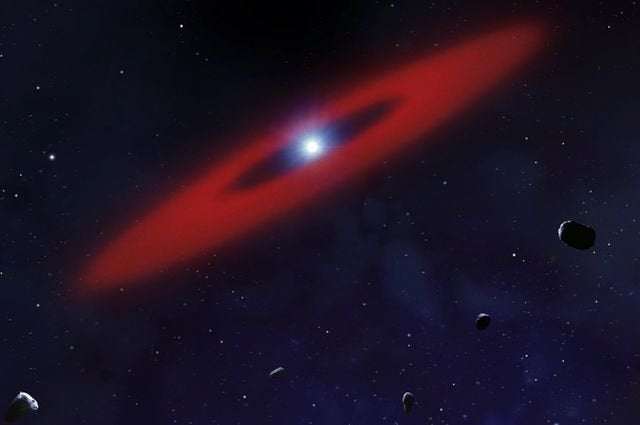As complicated as it may now be, life on Earth is derived from just four elements: nitrogen, carbon, hydrogen and oxygen. But the planet hasn’t always boasted these basic building blocks.
Many scientists believe they were acquired when Earth collided with an object from the Kuiper belt, a cluster of bodies, including comets and minor planets, in the far reaches of our solar system.
Now astronomers have uncovered evidence to suggest that such a cluster, complete with the building blocks of life, could be a common feature in other solar systems dotted around the universe.
It raises hopes that other planets may acquire life in the same way Earth did.
And the clue lies in a star whose atmosphere boasts the four key elements for life. Located in the Boötes constellation, WD 1425+540 is just 200 light years from Earth.

Astronomers believe the star picked up the elements when its gravitational field ripped apart a minor planet which harboured water, ice and rock.
The planet, which is thought to have been gobbled up in the last 100,000 years, originated from a cluster of bodies similar to our solar system’s Kuiper belt.
“If there is water in Kuiper belt-like objects around other stars, as there now appears to be, then when rocky planets form they need not contain life’s ingredients,” said Siyi Xu, the study’s lead author, a postdoctoral scholar at the European Southern Observatory in Germany.
“Now we’re seeing in a planetary system outside our solar system that there are minor planets where water, nitrogen and carbon are present in abundance, as in our solar system’s Kuiper belt,” Xu said in a statement.
“If Earth obtained its water, nitrogen and carbon from the impact of such objects, then rocky planets in other planetary systems could also obtain their water, nitrogen and carbon this way,” Xu added.
